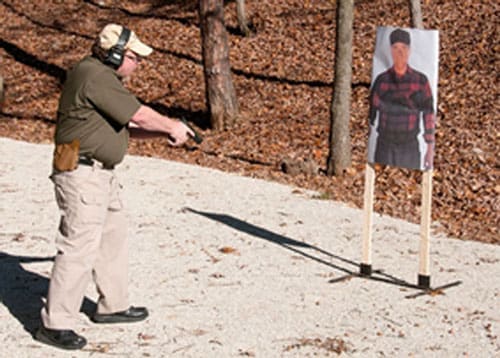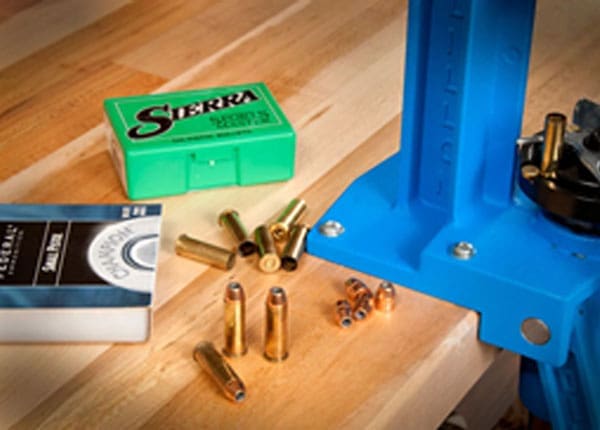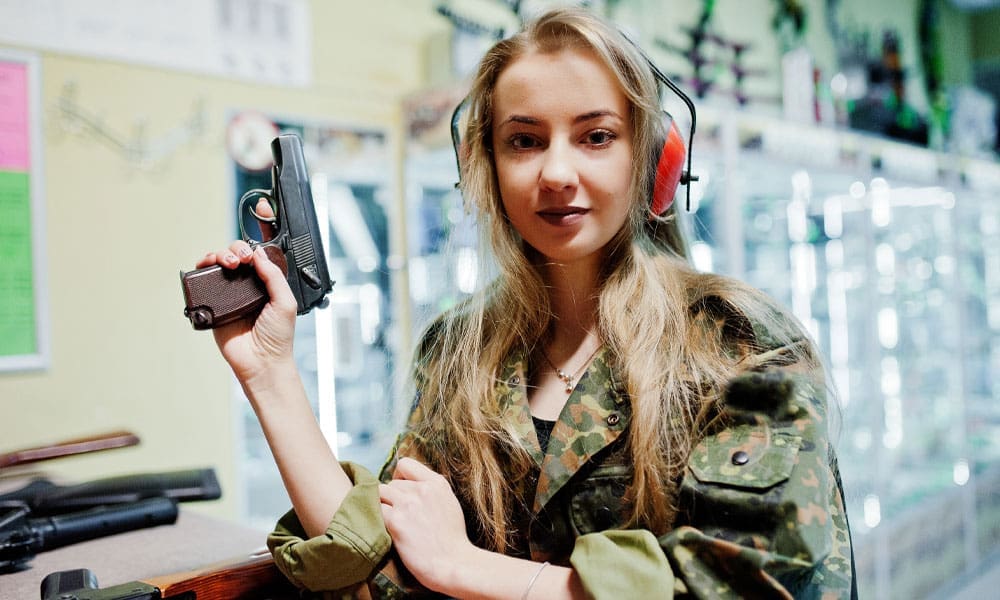The origin of this article comes from a large number of online posts connected to self-defense shootings.
Being an important source of knowledge, the Internet is also a great source of disinformation. The concepts shown below are worth considering.
Myth: No matter what caliber you use, just hitting them in the head will make them fall.

and use a loud ordering tone.
Actually, yes and no. If you hit the assailant in the right place in the head with any caliber, most probably they will fall immediately. Nevertheless, reaching the correct spot is not as simple as it might seem. The essential organs in the head below the nose are fewer than the ones located above the eyes such as the cranial vault.
We call it a vault because it protects the brain. Experience shows that bullets cannot be relied upon to reach the cranial vault since there are multiple cases of bullets that skim off the bones around the top and side of the skull.
Consequently, only about two inches of the real target are left on the head, between the bottom of the nose and the top of the eyes. As mentioned, nearly any caliber strongly hitting this 2 inch part will result in brain death, although there is only a very small chance to hit this tiny part on a moving aggressor, being yourself in a move and shooting under the immense stress of a deadly attack. It is, therefore, preferable to target the center of the largest mass available, which is obviously the chest.
Myth: Aiming at the heart is much better than targeting the center of the chest.
Although the heart is a central organ and it is very logical to aim for it, in simple words it is very small and located in a place that is not easily accessible. The ability to shoot worsens under the high stress of an attack. In the case when a shot at the heart doesn’t hit the exact right place, there would be very little damage to the body, or maybe the attacker would be missed. Unlike that, when the target is the center of the chest, even when the bullet hits off several inches, it will cause considerable damage to the body in all probability.
Myth: It is better to shoot small groups for self-defense

protective shooting to maximize efficiency.
Shooting small groups at an assailant causes double harm.
- Bullets are hitting successively the already damaged body. It is best to continue shooting in order to damage more tissue, which will result in subsequent muscle breakdown and further bleeding.
- Shooting successively is a matter of time, and the time works for the opposite side in a shootout. You must always remember why you are taking part in a gunfight; the attacker puts every effort to cause serious damage to your body or that of others.
I find it more preferable to teach to shoot groups in a width equal to this of the hand – eight inches in diameter. On the one hand, it can inflict damage with each shot, and on the other hand, it can hit the body aside. The smaller the group, the faster should be the fire and vice versa. It is also important to note that the greater the distance to the aggressor, the longer it takes to hit the eight-inch groups.
Myth: I would like to follow the military that uses full metal jacket ammunition
According to the convention, the armed forces are limited to the use of full metal jacket ammunition. Hollowpoint bullets open in a way that makes larger injury cavities and causes huge damage to the target. As a result, fatalities are way more than those caused by full metal jacket bullets, therefore their potential to immobilize the aggressor is high. Moreover, hollow points normally stay within the body and do not pass through and out of the target like full metal jacket bullets, so people behind the target are more protected from danger.
Myth: Wearing reloaded ammo is reliable as in the case of factory rounds

I have no intention to offend handloaders, but handloading is undisputedly less reliable than factory-loading. Every time that I met a participant with ammunition problems during my classes, it was because of the reloads. The ones that are continuously reused have brass defects, and consequently, the cartridges tend to fail.
When firing the bullet, the internal pressure causes the expansion of the casing.
Besides, occasionally the resizing is done improperly during the handloading, which can result in the jamming of the ammunition in the gun. I had this experience many times with my purchased reloads. Incorrect powder drops are an additional common reloading problem that can lead to a weakened round and even a ‘squib’ (no power, or a very little one), leaving a bullet fit in the barrel or a ‘double charge.’
The probability of having a damaged gun and harmed shooter because of excessive powder is very high. Throughout these years, there were many squibs in competitions on numerous occasions in my practice.

Moreover, some legal considerations are opposed to the use of reloaded ammunition. In the case of a shooting, the police are not able to test the performance of reloads during an investigation, as the ingredients/recipe are unverifiable. Stocks of all production lots of all commercial ammunition are kept by legal agencies for the purpose of comparison in shooting surveys.
When one uses reloads, the authorities will not have the ability to compare their claims with the results of ammunition tests. The defense attorney can even want to reassure the jury in court by claiming that you created your own ammo because you believe you are better at manufacturing ammunition than commercial producers, and/or because your objective was to create ammo that was more lethal than you could buy. Right or wrong, how will this influence the jury’s position towards you?
Always go for factory weapons for self-protection whereas buying reloads or reloading your own ammo is more affordable and good for practice. When it comes to the full stopping capacity, factory ammunition is much more effective.
Myth: Over 9 mm, .45s make more one-shot stops
This is not easily proven since many aspects, the most important of which is shot positioning, result in stopping power. If the gunman does not place proper hits on the target, a .45 would not deter anything. The positioning of shots and the number of hits is much more essential than the selection of caliber.

Myth: Always practice on center mass to achieve high accuracy
I dislike the terms “never” and always” since they always never work. The fact is no two gunfights are similar, and you’re not going to know how many shots you will need to end the fight. Keep firing till the danger stops: one, five, ten, or more shots may be necessary.
Don’t get in a rut of constantly firing the same amount of shots in training, alternatively fire strings with different counts. To not get damaged in a real-life fight, differ the shot number and avoid growing training scars. Training should also involve verbal exercises and even non-shooting challenges, like unholstering, challenging, and not firing. Not all on-street protective shooting conditions would need firing scenarios.
You can find high-quality outdoor and shooting sports products at K-var. There you will find self-defense shooting products that you need and get them delivered to you.
